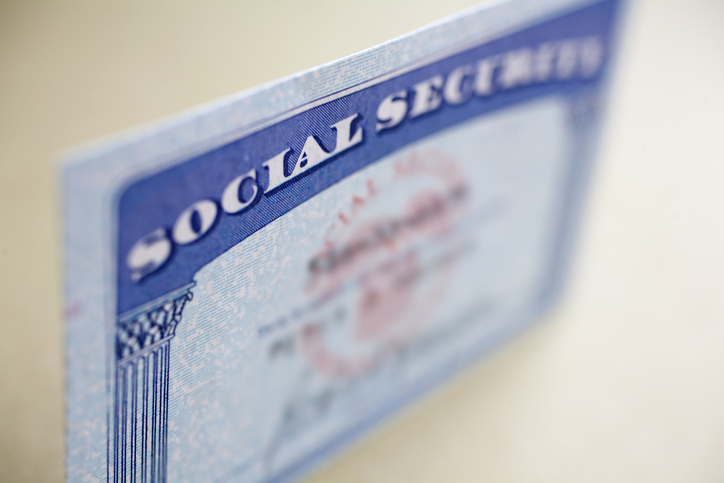Client Alert: SSA’s New SSN No-Match Letters: What To Do If You Receive One

The Social Security Administration (SSA) has resumed its practice of sending employers social security number (SSN) no-match letters, labeled Employer Correction Requests.
Here’s what you need to know:
SSA stopped issuing SSN no-match letters in 2007 because it was uncertain what employers were required to do after receiving one of these letters. SSA had issued regulations mandating a process for employers to follow, but the regulations were enjoined in federal court. Now SSA has resumed sending these letters, but still there are no regulations dictating what employers are required to do upon receiving an SSN no-match letter.
The new letters don’t identify the affected employees. The letters inform employers that there is an SSN mismatch in SSA’s records based on the employer’s W-2s and indicate only the number of affected employees (no names). To find out which employees are affected, the employer is required to register for SSA’s Business Services Online (BSO) service and retrieve the list of employees online. Alternatively, the employer could check all of its employees’ names and SSNs through SSA’s Social Security Number Verification Service to determine which employees are affected, but checking every employee won’t be feasible for many employers.
SSA’s new approach protects the privacy of the affected employees by not communicating this information in a general mailing to the employer, but also pushes employers to register with BSO.
SSN mismatches can be caused by name changes, data entry or transcription errors on the employer’s W-2s, name conventions such as multiple surnames, or many other potential errors. There’s no reason to assume an SSN mismatch indicates a worker isn’t authorized for employment, although mismatches can result from a worker using someone else’s SSN or a false SSN. The SSN no-match letters explain that the mismatch does not necessarily indicate a worker isn’t authorized for employment, and that no adverse employment action may be taken based solely on an SSN no-match letter.
So what should employers do with SSN no-match letters?
Here we offer our general advice, but it may not fit every circumstance. If your organization receives an SSN no-match letter and you have questions or concerns, please contact our office for consultation. Proceed with caution, because it’s too easy for well-meaning employers to overstep and violate I-9 rules and employment discrimination prohibitions.
If you receive an SSN no-match letter:
- We recommend registering with BSO and retrieving the list of affected employees. It’s important not to ignore an SSN mismatch letter. Improper reporting can jeopardize the employee’s eligibility for important SSA benefits. Failure to follow up on an SSN no-match letter reflects poorly upon the organization’s concern for its workers and its commitment to legal compliance. At the very least, the employer needs to review its own records to confirm it submitted the correct names and SSNs to SSA. If errors are found in the employer’s records, the employer can submit corrected W-2s.
- If the employer confirms its records and W-2s correctly reflect the name and SSN provided by the employee, the employer should inform the employee of the SSN mismatch. The U.S. Departments of Justice and Homeland Security make it clear that the employee should be given the opportunity to correct the SSN mismatch. In fact, if the employer is reasonably satisfied that the error is with SSA, and the employee’s efforts to correct the discrepancy aren’t successful, the employer is not required to take any further action. But if the employer ignores an SSN no-match letter and doesn’t inform the employee, and there’s any enforcement action against the employer, the employer could be found to have “knowingly” continued to employ an unauthorized worker. The penalties for knowing violations are steeper than for inadvertent violations. The definition of “knowing” can include actual knowledge, or simply notice that there may be a problem, depending on the circumstances.
- The employer should keep track of the time allowed for the employee to address the error, afford a “reasonable” amount of time depending on the circumstances, and then make a determination whether any further action is necessary based on the information presented by the employee and the “totality of the circumstances.” The employer should document its efforts, to show the employer acted prudently at each step and ultimately decided the situation had been addressed adequately, even if it wasn’t resolved with SSA.
- While it’s important to give employees the benefit of the doubt with an SSN mismatch, employees who admit they don’t have lawful work authorization must be terminated. Similarly, if the employer knows or has reason to believe an employee lacks work authorization, the employee must be terminated. It can be very difficult to determine if you have “knowledge” or “reason to believe” based on nondiscriminatory fact – not rumors, innuendo, or hunches, all of which may be discriminatory. We recommend consulting legal counsel before terminating any employee on this basis – except when employees admit they don’t have lawful work authorization.
- The detailed I-9 rules and guidelines should be followed at every point to avoid document abuse by the employer. For example, the employer is not allowed to reverify an I-9 unless it expired or an error was found in a nondiscriminatory self-audit. SSN no-match letters don’t relate to I-9s, and employers are not allowed to reverify I-9s based on an SSN no-match letter.
For more information, see “Frequently Asked Questions” posted by the U.S. Department of Justice, Civil Rights Division, Office of Special Counsel, available here.
Detailed I-9 rules and guidance can be found here.
Please contact your employment counsel at Hirschfeld Kraemer LLP with your specific questions and for further guidance, or contact our Immigration Counsel: Leigh Cole, lcole@hkemploymentlaw.com.





